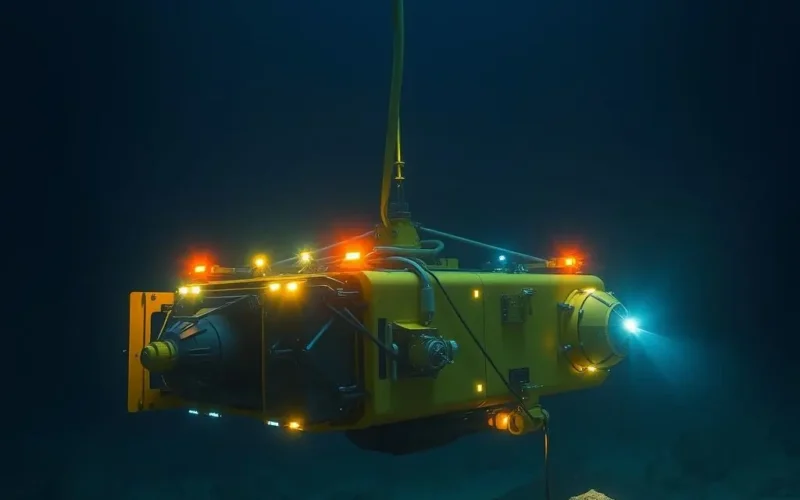Ever stare out at the vast ocean and wonder what secrets lie thousands of feet below the surface, shrouded in crushing darkness and immense pressure? For centuries, the deep sea remained an almost impenetrable mystery, a world as alien as outer space. But thanks to leaps in engineering and robotics, humanity is finally starting to peel back the layers of this enigmatic realm. Forget just bulky submarines; the real heroes of modern deep-sea exploration are a fleet of sophisticated machines built to withstand the extreme, gather unprecedented data, and serve as our eyes and hands where humans simply cannot go.
We’re talking about the incredible technology behind Remotely Operated Vehicles (ROVs) and advanced Autonomous Underwater Vehicles (AUVs), alongside modern deep-diving submersibles. These aren’t mere metal shells; they are marvels of engineering, packed with cutting-edge sensors, intricate manipulators, and robust communication systems, designed to operate in environments that would instantly crush anything less resilient.
Want a quick glimpse into this fascinating world? We put together a short video that highlights just how mind-blowing this tech is:
Pretty amazing, right? Let’s dive deeper into how these technological pioneers explore the dark abyss, revealing secrets from vibrant hydrothermal vents teeming with unique life to ancient shipwrecks lying silent on the seabed.
Table of Contents
The Ocean’s Cruel Embrace: Why We Need Advanced Tech
Exploring the deep sea isn’t like hiking a mountain. It presents a unique set of challenges that push the boundaries of materials science, robotics, and communication:
- Immense Pressure: For every 10 meters you descend in the ocean, the pressure increases by roughly one atmosphere. At the average depth of the ocean (around 3,700 meters), the pressure is over 370 times greater than at the surface. In the deepest parts, like the Mariana Trench (>10,000 meters), it’s over 1,000 times greater! This requires incredibly strong, often spherical, pressure hulls and robust external components.
- Absolute Darkness: Sunlight only penetrates the uppermost layers of the ocean (the euphotic zone). Below about 1,000 meters (the aphotic zone), it is perpetually dark. Exploration relies entirely on artificial lighting and non-visual sensors like sonar.
- Extreme Cold: The deep ocean is typically just a few degrees above freezing (around 2-4°C), requiring insulated components and careful thermal management.
- Communication Blackout: Radio waves, used for communication in air and space, are quickly absorbed by saltwater. Communication must rely on slow acoustic signals through the water or physical tethers.
- Vast Distances: The areas to be explored are enormous, making efficient coverage and long operating times essential.
Overcoming these challenges is where modern deep-sea technology truly shines.
The Workhorses of the Deep: Remotely Operated Vehicles (ROVs)
Imagine a sophisticated robot connected to a surface ship by a long, strong umbilical cable. That’s essentially an ROV. They are unoccupied, highly maneuverable underwater robots controlled in real-time by pilots typically situated in a control room on the surface vessel.
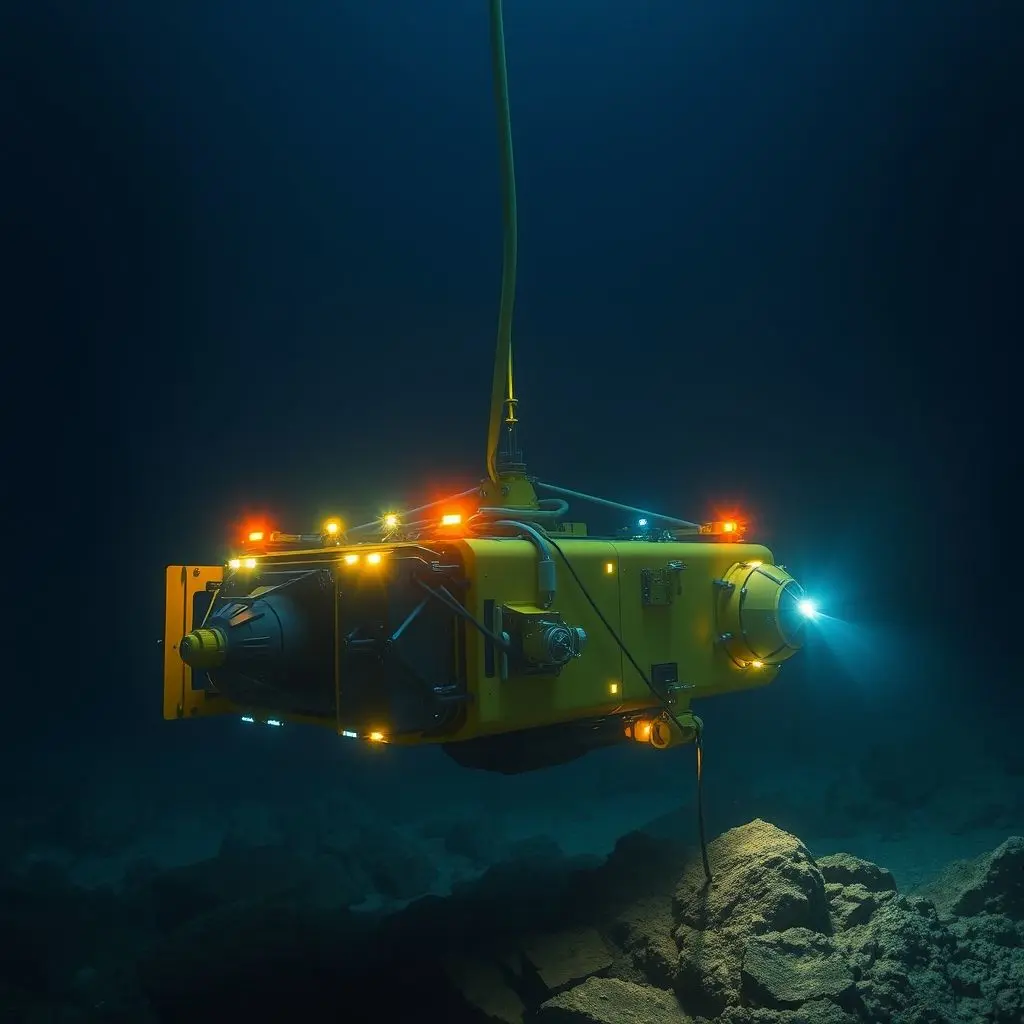
How ROVs Work: Tethered Power and Data
The defining feature of an ROV is its tether. This multi-purpose cable serves several critical functions:
- Power Supply: High-voltage electrical power is sent down the tether from the surface vessel, providing virtually unlimited operating time compared to battery-powered vehicles.
- Communication Link: High-bandwidth fiber optic cables within the tether transmit control signals down to the ROV and send back streams of data, including high-definition video from multiple cameras, sensor readings, and vehicle status, all in real-time.
- Structural Support: The tether can also provide a means for the surface vessel to assist in maneuvering the ROV, especially in strong currents, or even recover it.
Onboard the ROV itself, key components include:
- Frame and Buoyancy: A sturdy frame holds the components, often made of aluminum or titanium. Syntactic foam or other buoyant materials provide lift, making the vehicle neutrally buoyant or slightly positively buoyant.
- Thrusters: Multiple electric thrusters (often 6 or more) provide propulsion and precise maneuvering in all directions (forward/backward, up/down, left/right, pitch, roll, yaw).
- Cameras and Lighting: Multiple high-resolution cameras (standard, low-light, or even 4K) provide visual feedback to the pilots. Powerful LED lights illuminate the dark environment.
- Manipulator Arms: Hydraulic or electric robotic arms allow the ROV to interact with the environment – collect samples (rocks, sediment, biological specimens), deploy instruments, or even perform complex tasks like cutting cables or turning valves on underwater equipment.
- Sensors: A suite of sensors collects data on depth, heading, attitude, temperature, salinity, dissolved oxygen, methane levels, and more.
- Sonar Systems: Forward-looking sonar helps navigate and avoid obstacles, while scanning sonar can create maps of the surrounding area.
Applications and Types of ROVs
ROVs come in various sizes and capabilities:
- Observation-Class/Inspection ROVs: Small, portable vehicles, often used for visual inspections of pipelines, structures, or in search and recovery operations. They typically have basic cameras and lights.
- Work-Class ROVs: Large, powerful machines weighing thousands of kilograms, equipped with multiple heavy-duty manipulator arms, advanced tooling (cutters, grinders, dredges), and extensive sensor packages. These are the workhorses of the offshore oil and gas industry, scientific research at great depths, and complex recovery missions.
Their real-time control makes them indispensable for tasks requiring human decision-making or intricate interaction with the environment.
The Silent Navigators: Autonomous Underwater Vehicles (AUVs)
Unlike ROVs, AUVs operate independently, following pre-programmed missions without a physical connection to the surface. This untethered freedom allows them to cover vast areas and operate for extended periods.
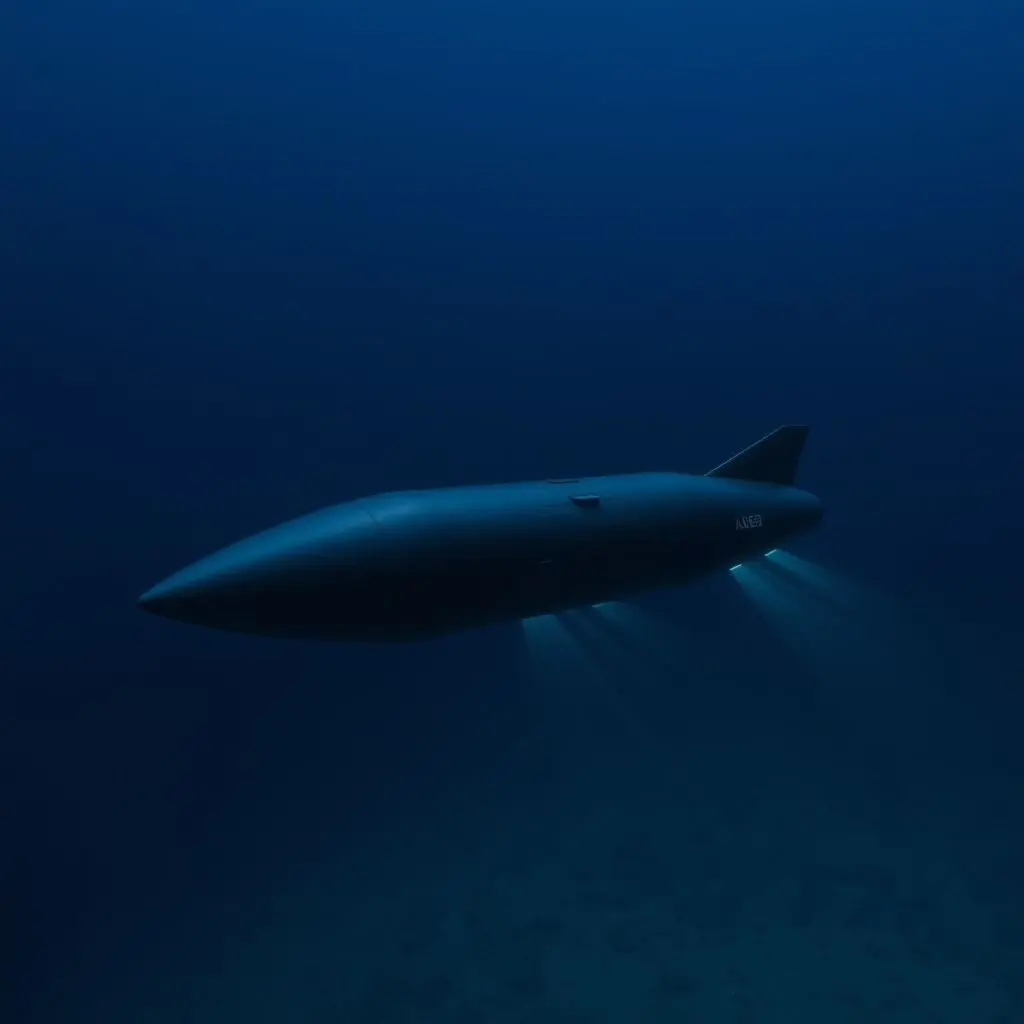
How AUVs Work: Independent Exploration
AUVs are launched from a ship or shore and execute their mission based on instructions uploaded before deployment. Key aspects include:
- Power Systems: They rely on internal power sources, typically large battery packs (lithium-ion is common for energy density) or sometimes fuel cells for longer endurance.
- Navigation: Without a tether for positioning, AUVs use sophisticated navigation systems. This often involves Inertial Navigation Systems (INS) that track movement from a known starting point using gyroscopes and accelerometers, corrected periodically by external references like acoustic beacons (Long BaseLine – LBL, Short BaseLine – SBL) or Doppler Velocity Logs (DVL) which measure speed over the seabed. Some can even use underwater GPS when near the surface or specialized acoustic positioning systems.
- Sensors and Data Storage: AUVs carry a variety of sensors similar to ROVs, but also often specialized payloads for mapping, such as Side-Scan Sonar (SSS) for detailed seabed imagery, Multibeam Echo Sounders (MBES) for bathymetry (mapping depth), and sub-bottom profilers to look beneath the seabed. Data is stored onboard for retrieval after the mission is completed.
- Mission Planning Software: Sophisticated software plans the vehicle’s route, depth, and sensor operations.
- Communication (Limited): While underwater, communication is usually limited to acoustic modems for sending/receiving small amounts of data (like status updates) or emergency abort signals. Full data download and detailed mission reprogramming typically occur only when the AUV surfaces.
Applications and Types of AUVs
AUVs are ideal for systematic surveys and data collection over large areas:
- Mapping and Surveying: Creating detailed maps of the seafloor for charting, resource exploration, or engineering projects.
- Environmental Monitoring: Collecting data on water properties (temperature, salinity, currents, chemistry) over extended periods or large areas.
- Under-ice Exploration: Their autonomy makes them valuable for exploring beneath ice sheets where surface vessels cannot operate.
- Search Missions: Covering broad search areas more quickly than a tethered ROV.
- Scientific Research: Following ocean currents, tracking marine life, or studying phenomena like harmful algal blooms.
AUVs come in various forms, from torpedo-shaped vehicles designed for speed and long range to glider AUVs that move slowly by changing their buoyancy, conserving energy for extremely long missions (months).
Still Relevant? Manned Submersibles (DSVs)
While the focus is on unmanned tech, it’s worth mentioning Deep Submergence Vehicles (DSVs) like the famous Alvin or the new Limiting Factor. These carry human occupants to the deep sea. They offer the unique benefit of having human observers and scientists directly experiencing and interacting with the environment, allowing for on-the-spot decision-making and nuanced observation that even the most advanced AI can’t replicate (yet).
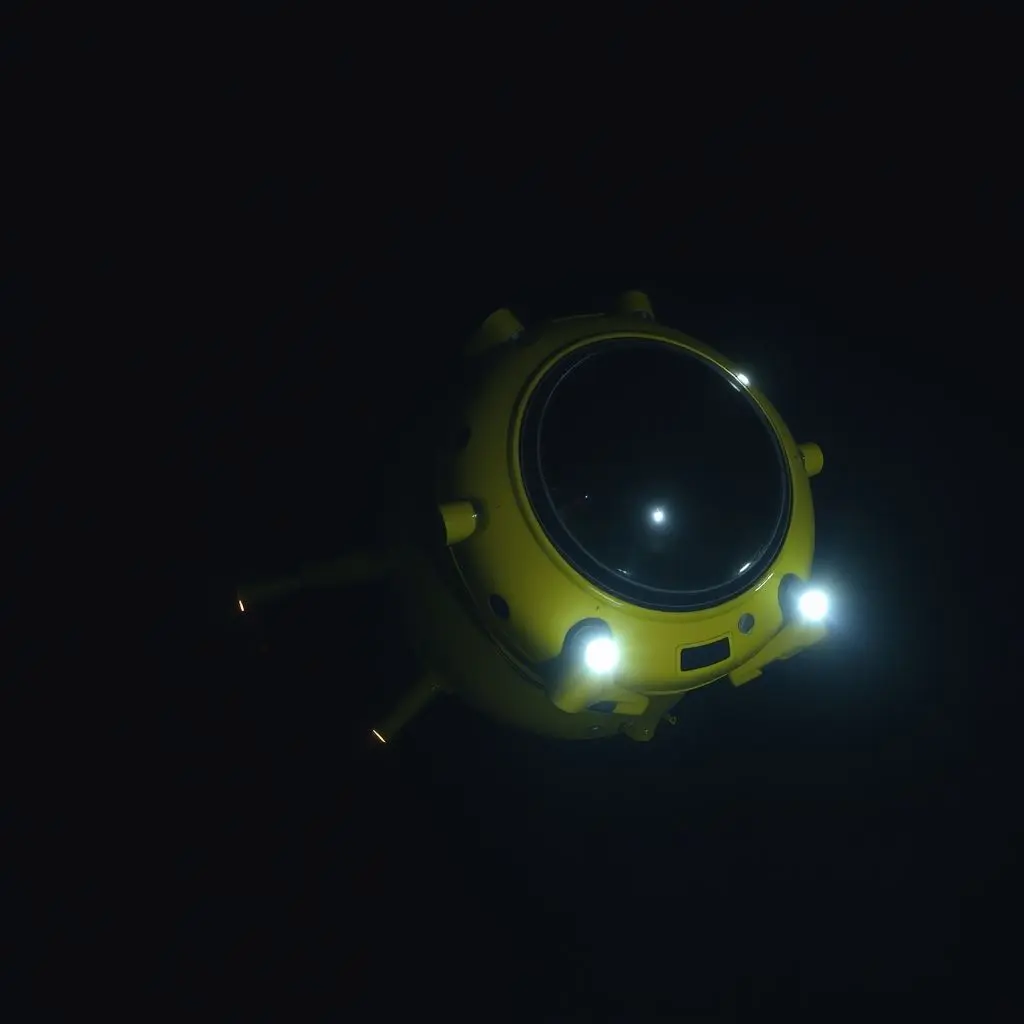
However, they are complex, expensive to operate, have limited dive times (due to life support and battery power), and are inherently riskier as they carry human life. Unmanned systems have largely taken over routine or high-risk tasks, leaving manned submersibles for specific scientific expeditions requiring human presence.
The Eyes, Ears, and Hands: Sensors and Tooling
Regardless of whether they are ROVs or AUVs, the real value lies in the data they collect and the tasks they can perform. This is enabled by a suite of sophisticated instruments:
- Optical Cameras: High-definition video and still cameras are fundamental for visual documentation of geological features, marine life, and human-made objects.
- Sonar Systems: Ranging from simple altimeters (measuring distance to seabed) to complex multibeam echo sounders for 3D mapping and side-scan sonar for detailed seabed texture imagery.
- CTD Sensors: Measuring Conductivity, Temperature, and Depth – fundamental properties of the water column.
- Chemical Sensors: Detecting levels of dissolved oxygen, methane, hydrogen sulfide, and other chemicals crucial for studying processes like hydrothermal vents or decomposition.
- Geophysical Sensors: Magnetometers (detecting magnetic anomalies, useful for finding wrecks or geological features), sub-bottom profilers (imaging layers beneath the seabed).
- Sampling Tools: Manipulator arms equipped with claws, suction samplers, push cores (for sediment), and bio-boxes for collecting physical specimens.
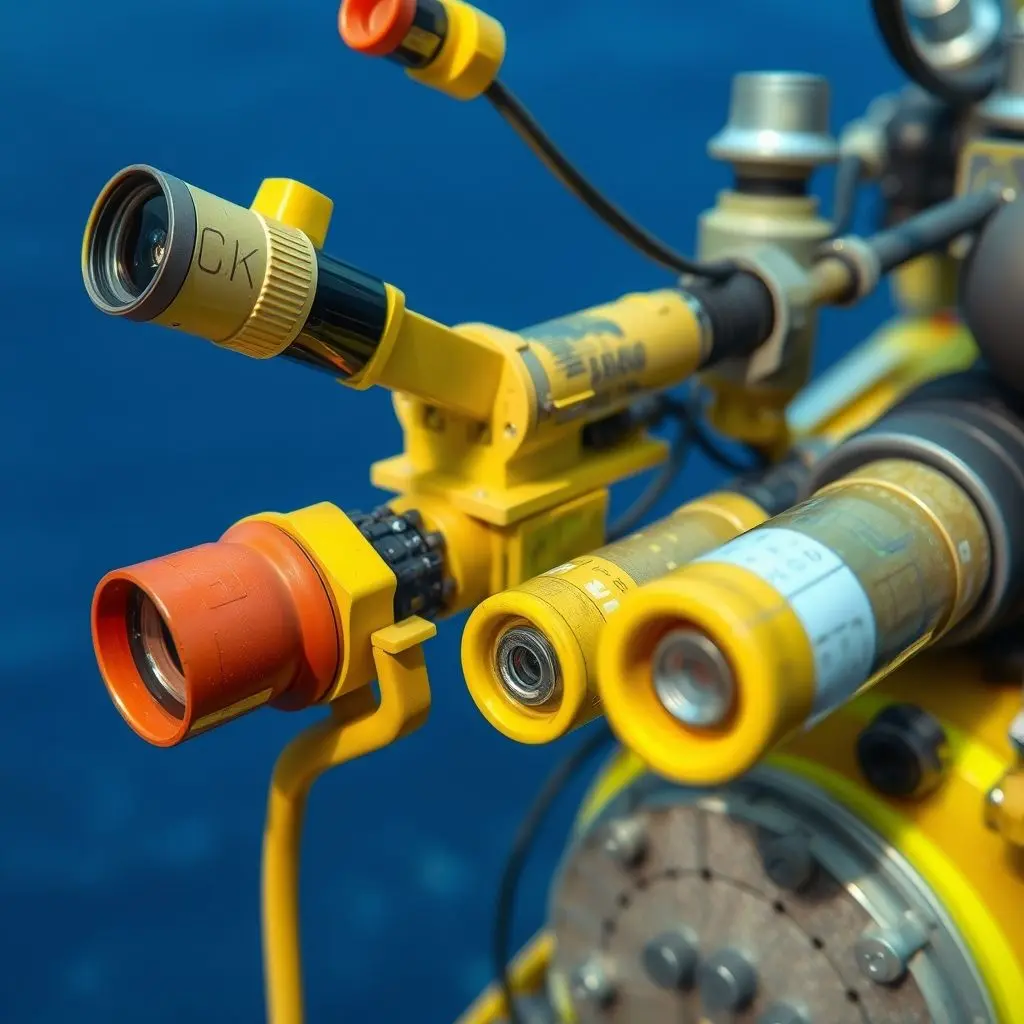
Facing the Future: Deeper, Smarter, More Persistent
The technology continues to evolve rapidly. Future developments aim at even deeper dives, longer autonomy, increased data collection capabilities, and improved decision-making onboard the vehicles themselves.
- AI and Machine Learning: Enabling AUVs to analyze data in real-time, identify objects of interest, and modify their mission autonomously.
- Advanced Materials: Lighter, stronger materials for pressure hulls and components.
- Improved Power Systems: Higher energy density batteries and potentially fuel cells for even longer missions.
- Swarm Robotics: Deploying multiple smaller AUVs or ROVs that coordinate to cover areas more efficiently or perform complex tasks together.
- Better Communication: Exploring new methods for higher bandwidth communication underwater.
These advancements promise to unlock even more secrets from the 95% of the ocean that remains largely unexplored.
FAQ: Your Questions About Deep Sea Tech Answered
Here are some common questions people ask about deep-sea exploration technology:
Q: How deep can ROVs and AUVs go?
A: This varies greatly depending on the vehicle’s design and purpose. Observation-class ROVs might go to a few hundred meters. Work-class ROVs for the oil and gas industry typically operate in depths up to 3,000-4,000 meters. Scientific and specialized military ROVs can reach full ocean depth (around 11,000 meters). AUVs also vary widely, from coastal survey vehicles to those capable of exploring hadal zones (below 6,000 meters).
Q: How long can AUVs stay underwater?
A: Mission endurance depends on the battery capacity and speed/power usage. Smaller AUVs might operate for hours, while larger, more efficient ones (like gliders) can stay deployed for weeks or even months, resurfacing periodically to transmit data or get a GPS fix.
Q: Are these vehicles remotely controlled like a drone?
A: ROVs are very much like underwater drones, controlled in real-time via a tether. AUVs are different; they are autonomous robots that execute pre-programmed instructions without continuous human control, more like a robotic probe.
Q: What kind of data do they collect?
A: They collect visual data (photos, video), mapping data (bathymetry, side-scan sonar images), environmental data (temperature, salinity, oxygen, chemistry), geological data (magnetic anomalies, sub-bottom profiles), and can collect physical samples of water, sediment, rocks, and biological specimens.
Q: What are the biggest limitations?
A: For ROVs, it’s the tether (limits range, susceptible to currents/snagging, requires a surface ship). For AUVs, it’s battery life, lack of real-time human interaction/decision making, and limited communication underwater. For all deep-sea tech, overcoming pressure and the high cost of development and operation are significant challenges.
Humanity’s Ever-Expanding Gaze into the Deep
These incredible machines represent humanity’s relentless curiosity and ingenuity. They are our proxies in a world too extreme for us to easily inhabit, pushing the boundaries of engineering to reveal the complex ecosystems, geological wonders, and historical artifacts hidden beneath the waves. Each successful dive, each byte of data transmitted, brings us closer to understanding the vital role the deep ocean plays in our planet’s climate and ecosystems, and perhaps, revealing wonders we can barely imagine.
As the technologies continue to advance, our window into the dark abyss grows clearer, promising exciting discoveries and a deeper connection to the vast, unexplored majority of our own world.
